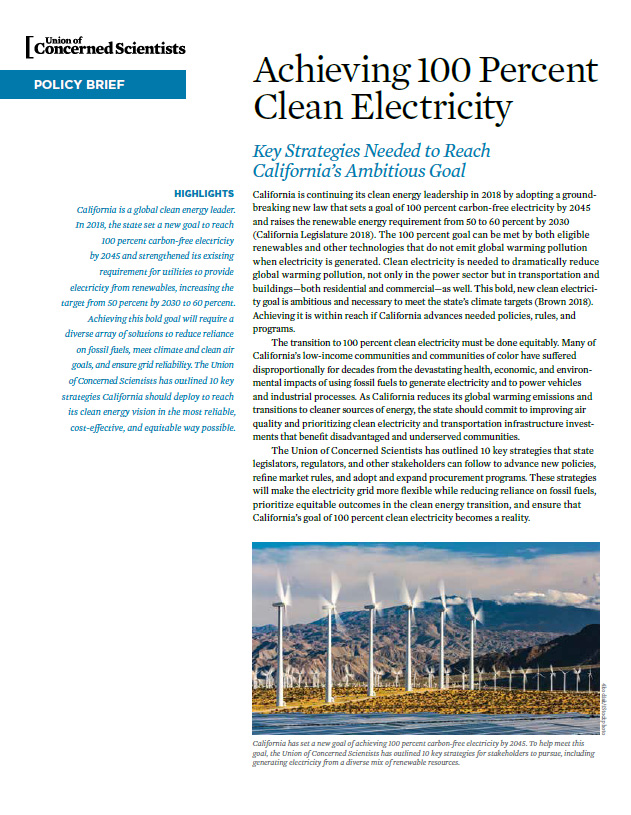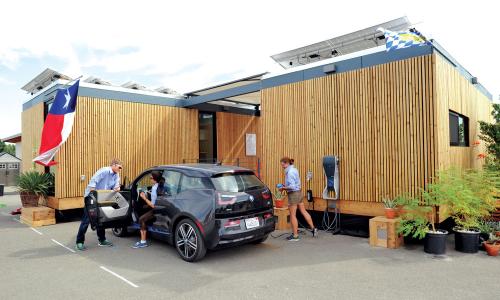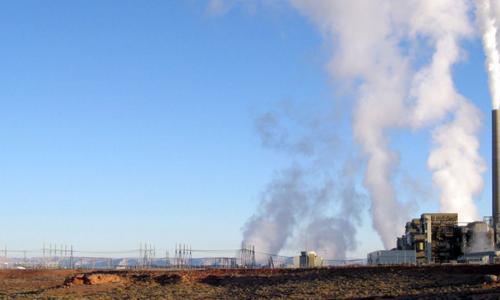In 2018, California set a groundbreaking new goal of 100 percent carbon-free electricity by 2045.
The state’s goal is necessary, ambitious, and achievable. To get there, the Union of Concerned Scientists outlined 10 key strategies that state legislators, regulators, and other stakeholders can follow.
These strategies will make the electricity grid more flexible, while reducing reliance on fossil fuels and prioritizing the needs of impacted communities—key components of the clean energy transition.
To achieve 100 percent clean electricity, California should:
- Use electricity as efficiently as possible and reduce demand at times of day when renewable supplies are least abundant.
- Generate renewable electricity from a diverse mix of sources.
- Plan for an orderly and equitable transition away from natural gas.
- Use renewable generation technologies to provide grid reliability services.
- Invest in energy storage at various timescales and locations.
- Enable greater integration of western electricity markets.
- Unlock the value of distributed energy resources.
- Electrify cars, trucks, and buildings.
- Shift electricity demand to better coincide with renewable electricity production.
- Promote high-quality jobs and workforce development.



